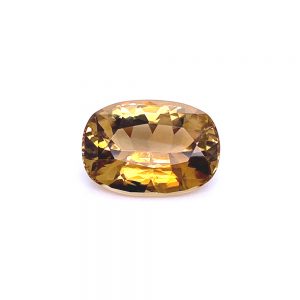Sinhalite
The name sinhalite derives from the Sanskrit word for Lion Island, as Sri Lanka was called in the past. The largest example of faceted sinhalite so far weighs a stunning 252 carats. Sinhalite varies in brown colors, from pale yellowish brown to a darker, greenish brown. Pleochrism is the stone’s best attribute, displaying greenish brown and light brown, to dark brown when viewed from different angles. Sinhalite is mostly found in the gem gravel beds of Ratnapura, Sri Lanka.Large specimens are rare, but do exist. Crystals however, are very rare, although some can be found in Burma in Myanmar. Other sources for sinhalite include the Eastern Siberia region of Russia, the Warwickite occurrence in Ontario, Canada, and the Mogok mines in Mandalay, Burma. There are also unconfirmed reports of non-gem quality sinhalite occurrences in the United StatesSinhalite is a stone that represents joy in everyday life, urging the wearer to try new things. It is an ideal stone for people who are trying to open up to others.to get to know each other better, or in business, for groups that are working together on a project. It has also said to be a beneficial stone for people who have large spiritual tasks to fulfill.Sinhalite is a vitreous and transparent to translucent stone. It rates a 6.5 on the hardness scale. It is suitable for jewelry.
Showing all 1 result




